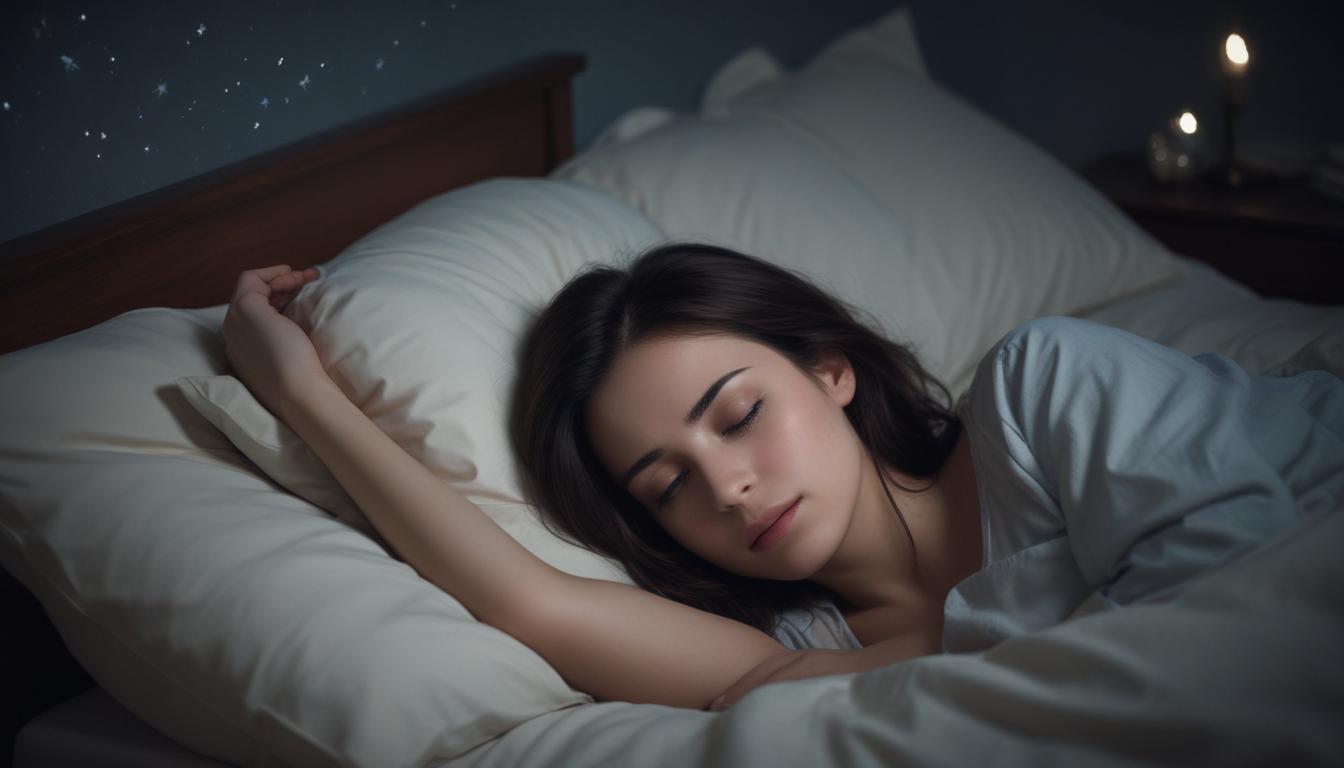Now Reading: Sleep Disorders A Simple Guide
- 01
Sleep Disorders A Simple Guide
Sleep Disorders A Simple Guide

Understanding Sleep Disorders A Comprehensive Guide to Reclaiming Your Rest
Is the night a source of anxiety rather than rest? For millions, the simple act of falling and staying asleep is a nightly battle. You might find yourself staring at the ceiling, your mind racing, while the hours tick by. The frustration builds as you anticipate another day of exhaustion, brain fog, and irritability. This struggle is more than just being tired; it impacts your health, your work, and your relationships. If you’re tired of being tired and feel like you’ve tried everything, you are not alone, and more importantly, there is hope.
This guide is designed to shed light on the complex world of sleep disorders. By understanding what might be disrupting your rest, you can take the first step toward finding a real solution. We will explore the most common types of sleep disorders, what causes them, and the proven pathways to achieving the deep, restorative sleep your body and mind desperately need. It’s time to stop fighting with your pillow and start your journey back to peaceful nights.
What Are Sleep Disorders Beyond Just a Bad Night
A sleep disorder is not the same as having an occasional rough night due to stress or a late-night coffee. It is a persistent condition that disrupts your normal sleep patterns, leading to significant distress and impaired functioning in your daily life. These disorders can affect the quality, timing, and amount of your sleep, creating a cascade of negative effects. The core issue is a consistent problem that prevents you from getting the restorative rest that is essential for physical and mental wellness.
The impact of an untreated sleep disorder extends far beyond feeling groggy. Chronic sleep deprivation is linked to serious health problems, including heart disease, high blood pressure, diabetes, and a weakened immune system. Mentally, it can worsen conditions like anxiety and depression, impair cognitive function, and increase your risk of accidents. Recognizing that your sleep problem is a medical condition, not a personal failing, is the crucial first step toward seeking and receiving effective help.

Common Sleep Disorders You Should Know
While there are many types of sleep disorders, a few are particularly common and can be the underlying cause of your nightly struggles. Identifying with the symptoms of one of these conditions can provide clarity and direction for speaking with a healthcare professional.
Insomnia The Frustrating Inability to Sleep
Insomnia is the most well-known sleep disorder, characterized by a persistent difficulty in falling asleep, staying asleep, or waking up too early and not being able to get back to sleep. This isn’t just one or two bad nights; for a diagnosis of chronic insomnia, these issues must occur at least three nights a week for three months or longer. It leaves individuals feeling as though they haven’t slept at all, even if they were in bed for a sufficient amount of time.
The daytime consequences of insomnia are profound. Sufferers often experience fatigue, low energy, difficulty concentrating, mood disturbances, and decreased performance in work or school. It can create a vicious cycle where the anxiety about not being able to sleep becomes a primary reason you can’t fall asleep. Treatment often involves cognitive behavioral therapy for insomnia (CBT-I), lifestyle changes, and sometimes medication.
Sleep Apnea The Silent Interruption
Sleep apnea is a serious disorder where breathing repeatedly stops and starts during sleep. The most common form, Obstructive Sleep Apnea (OSA), occurs when the throat muscles relax and block the airway. This causes the person to momentarily stop breathing, often hundreds of times a night. The brain senses this lack of oxygen and briefly rouses the person from sleep to reopen the airway. These arousals are so brief that the person usually has no memory of them.
The most prominent signs of sleep apnea include loud snoring, episodes of gasping or choking during sleep witnessed by a partner, and excessive daytime sleepiness despite a full night in bed. Because it starves the body of oxygen and disrupts deep sleep, untreated sleep apnea is a major risk factor for stroke, heart attack, and other cardiovascular problems. The gold standard for treatment is a Continuous Positive Airway Pressure (CPAP) machine, which keeps the airway open with a gentle stream of air.
Restless Legs Syndrome The Overwhelming Urge to Move
Restless Legs Syndrome (RLS), also known as Willis-Ekbom disease, is a neurological disorder that causes an uncomfortable and often irresistible urge to move your legs. This sensation typically happens in the evening or nighttime hours when you’re sitting or lying down. It’s often described as a creepy-crawly, pulling, or throbbing feeling deep within the limbs.
This overwhelming urge makes it incredibly difficult to fall asleep. The only thing that provides temporary relief is moving the legs, such as by walking, stretching, or shaking them. This creates a frustrating cycle of needing to lie still to sleep but being forced to move for relief. RLS can lead to severe sleep deprivation and significantly reduce quality of life. Treatments range from lifestyle adjustments, like reducing caffeine, to medications that help regulate dopamine in the brain.
The Path to Diagnosis and Treatment
If any of these conditions sound familiar, the most important action you can take is to consult a healthcare professional. Self-diagnosing can be misleading, as many sleep disorders share similar symptoms. Your doctor can help you get to the root of the problem, which may involve keeping a detailed sleep diary or being referred for a sleep study (polysomnography) to monitor your brain waves, heart rate, and breathing overnight.
Treatment is not one-size-fits-all and will be tailored to your specific diagnosis. It often begins with improving your sleep hygiene—creating a consistent sleep schedule, ensuring your bedroom is cool, dark, and quiet, and avoiding stimulants like caffeine and electronics before bed. For many, this is not enough. Medical interventions may include CPAP for sleep apnea, medication for RLS, or powerful therapeutic techniques like CBT-I for insomnia, which helps restructure thoughts and behaviors around sleep. Remember, restful sleep is not a luxury; it is a pillar of health, and reclaiming it is one of the best things you can do for your overall wellbeing.


































